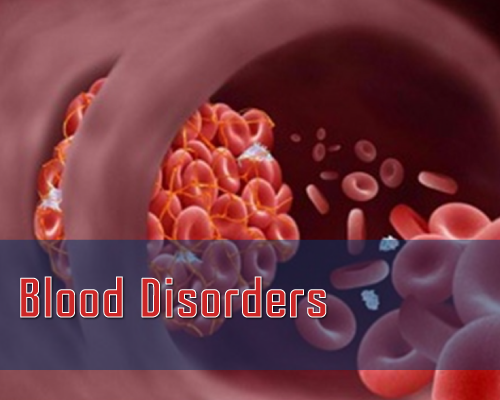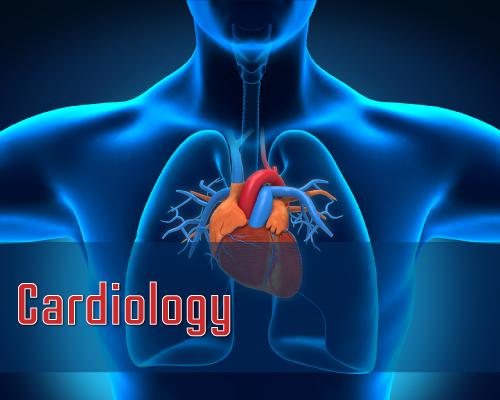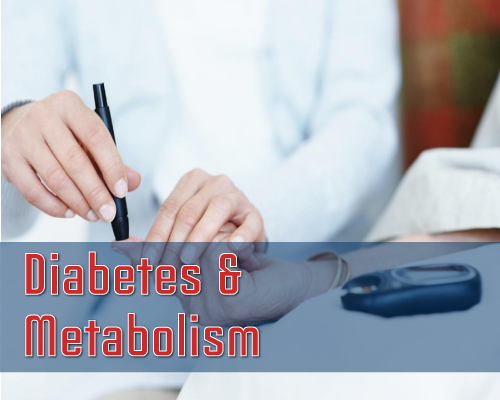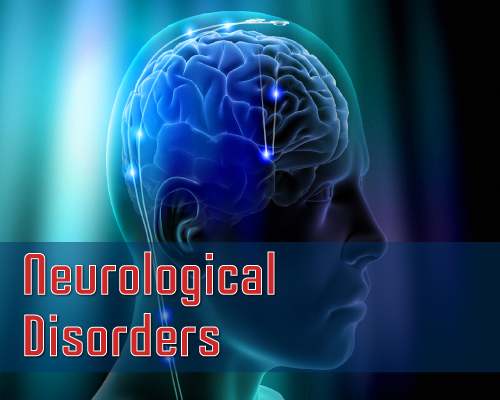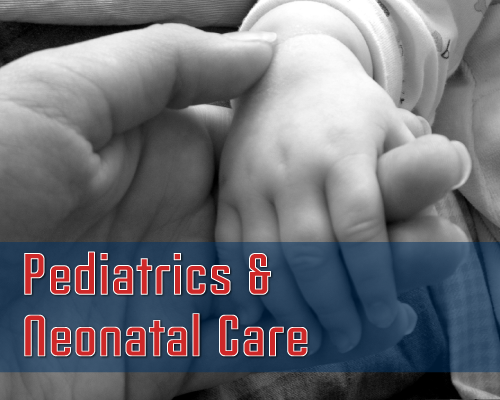Research Article
Association between Depression, Anxiety and Stress Symptoms and Glycemic Control in Diabetes Mellitus Patients
Abdulbari Bener1,2,3*, Mustafa Ozturk3 and Erol Yildirim4
1Department of Biostatistics & Medical Informatics, Cerrahpasa Faculty of Medicine, Istanbul University, Istanbul, Turkey
2Department of Evidence for Population Health Unit, School of Epidemiology and Health Sciences, The university of Manchester, Manchester, UK
3Division of Endocrinology-Metabolism and Diabetes, Medipol International School of Medicine, Istanbul Medipol University, Istanbul, Turkey
4Department of Psychology, Istanbul Medipol University, Istanbul, Turkey
*Address for Correspondence: Abdulbari Bener, Department of Biostatistics & Medical Informatics, Cerrahpasa Faculty of Medicine, Istanbul University, 34098 Cerrahpasa-Istanbul, Turkey
Dates: Submitted: 01 March 2017; Approved: 28 March 2017; Published: 04 April 2017
Citation this article: Bener A, Ozturk M, Yildirim E. Association between Depression, Anxiety and Stress Symptoms and Glycemic Control in Diabetes Mellitus Patients. Int J Clin Endocrinol. 2017;1(1): 001-007
Copyright: © 2017 Bener A, et al. This is an open access article distributed under the Creative Commons Attribution License, which permits unrestricted use, distribution, and reproduction in any medium, provided the original work is properly cited.
Keywords: Diabetes mellitus; DASS21; Depression; Anxiety; Stress; Predictors; Turkey
Abstract
Background: There are very a few studies on psychiatric symptoms in patients with Diabetes Mellitus (DM) patients and assessing glycemic controls.
Aim: To describe the level of glycemic control, complications and psychosocial functioning among DM patients using the Depression Anxiety Stress Scales (DASS-21) instrument and its predictors among diabetic Turkish population.
Subject and Methods: A cross-sectional study conducted from February 2016 to January 2017. Of the total 1,600 diabetic patients approached, 1,147 (71.6%) gave their consent. Data analysis included, sociodemographic, blood pressure and glycated hemoglobin (HbA1c) and the Depression Anxiety Stress Scales (DASS)-21 and Beck Depression Inventory (BDI-II) scale to assess the validity of DASS-21.
Results: Most of the studied diabetic cases were with HbA1c = 8 glycemic in the age group above 40 years old. There were statistically significant differences between two groups regarding occupation (p = 0.025), income (p = 0.001), place of residence (p = 0.014) and consanguinity marriages (p = 0.026). The most significant difference were oberved for parameters such as family history of Diabetes Mellitus, physical activities, high blood pressure, stroke and macro vascular complications. The depression, anxiety and stress scores were significantly higher and more frequent in diabetic HbA1c = 8 cases compared to HbA1c < 8. The multivariable logistic regression analysis revealed that high blood pressure, BDI-II depression, DASS21 stress, physical exercise, DASS21 depression, income, family history of diabetes, DASS21 anxiety and sleeping disturbance were the major significant contributors after adjusting for age, gender and other variables. The distribution depression, anxiety and stress scores in DM patients were higher in HbA1c = 8 compared to HbA1c < 8.
Conclusion: The current study suggests that there is relationship between DM and depression, anxiety and stress symptoms in Turkish population. DM is very complex disease and it management requires significant self-control and increasing access to psychological support.
Introduction
Diabetes Mellitus and psychiatric symptoms are two a major global public health problem which is increasing dramatically in developed and developing countries [1,2]. Several factors contribute in DM pathogenesis, including psychological [3], environmental and lifestyle factors [4,5], positive family history [6], ethnicity [7], and genetics [6-8]. Some author reported that the prevalence of DM rising substantially because of the epidemic of sedentary lifestyles and obesity [3,4].
There is a well recognized association between diabetes, depression, anxiety and stress and evidence showed that chronic illnesses usually have co-morbid unrecognized mental health disorders [2]. Although depression, anxiety, tension and stress are most commonly undiagnosed or underestimates among DM patients [9]. Several authors have reported that patients with diabetes are at least twice at risk to suffer from depression, anxiety and stress compared to the general population [6,8,10,11]. Furthermore, such symptoms mostly are associated with poor glycemic control, diabetes complications, worsened prognosis and quality of life [6,12]. Meanwhile, health care utilization and costs [13] increase with the coexistence of diabetes and major depression. Diabetes depression and stress has been found to be significantly associated with glycated haemoglobin (HbA1c) level [3].
The objective of the present study is to investigate the prevalence of anxiety, depression and stress symptoms among DM patients using the Depression Anxiety Stress Scales (DASS-21) instrument and its predictors among in Turkish population.
Subjects and Methods
The design based on a cross-sectional study which was performed among the diabetic patients registered in diabetic clinics of the hospitals during the study period from February 2016 to January 2017. IRB ethical approval for this study was obtained from the Cerrahpasa Faculty of Medicine and Medipol International School of Medicine, Istanbul Medipol University.
Subjects currently taking oral medications for diabetes 3 years considered to have DM and diagnosed in accordance with international standards (WHO 2006. HbA1c level-Measured using the DCA Vantage Analyser (Siemens Healthcare Diagnostics Inc, USA) from the same single finger prick.
A total number of 1,600 of DM patients males and females aged above 25 years approached and they were selected systematically 1-in-2 using a systematic sampling procedure of the PHC centres and 1,147 cases agreed to participate in the study with a response rate of 71.6%. 453 of them were excluded either because of incomplete questionnaires (163 diabetics) or did not want to respond to questionnaire (190 diabetics) due to lack of time resulting in 1,147 subjects (71.6%) for final analysis.
Depression Anxiety Stress Scales (DASS)-21questionnaire is very well known [14-18] tool consists of 21 symptoms divided into 3 subscales (depression, anxiety, and stress) of each 7 items and has excellent reliability estimates [15-18]. DASS21 symptom based on 4-point severity scale ranging from 0 to 3 measures and scores were categorized into normal, mild-moderate and severe [6,11,15,16], with the scale depressive (0-9, 10-20, and >20), anxiety (0-7, 8-14, and >14), and stress (0-14, 15-25, and >25).
Furthermore, we have used the questionnaire based on the BDI-II Depression Scale to assess the validity of DASS-21 screening scale as reported and confirmed by the previous studies [6,19,20]. The instrument consists of 21-items/statements that are self-reported. The score ranges from 0 - 63 to determine possible degree of depression symptoms. The instrument developers established four groups of scores and classified as the following: "minimal 0-13, mild 14- 19, moderate 20-28, and severe 29-63" [18] and cut-off scores for BDII of =16 to indicate clinical depression [19,20]. The BDI-II Depression Scale had optimal cut off =16 (sensitivity 0.84 and specificity 0.88). In the Turkish performed study, the internal consistency of the BDI-II Depression Scale showed a Cronbach's coefficient alpha of 0.86.
HbA1c values were divided into two groups (<8% and =8%) to describe glycemic control level for each subject, in accordance to previous reported studies [21,22].
Student-t test was used to ascertain the significance of differences between mean values of two continuous variables groups. Chi-square and Fisher's exact tests were used for differences between two or more categorical groups. Multiple stepwise logistic regression performed using the backward deletion method to determine the relationship between dependent metabolic control (HbA1c <8 and =8) and independent variables. Internal consistency of the BDI-II was tested using Cronbach´s coefficient alpha. The level p < 0.05 was considered as the cut-off value for significance.
Results
Table 1 shows the socio-demographic characteristics of the studied diabetic subjects by cut-off point's glycemic as HbA1c < 8 and HbA1c = 8. Most of the studied diabetic cases were in the age group above 40 years old. There were statistically significant differences between two groups regarding occupation (p = 0.025), income (p = 0.001), place of residence ((p = 0.014) and consanguinity marriages (p = 0.026).
Table 2 gives the life-style and clinical characteristics of the studied subjects by HbA1c. The most significant difference were oberved for parameters such as family history of Diabetes Mellitus among firts degree of relatives, physical activities, high blood pressure, stroke and macro vascular complications.
Table 3 presents depression, anxiety and stress scores in DM subjects by HbA1c. The depression, anxiety and stress scores were significantly higher and more frequent in diabetic HbA1c = 8 cases compared to HbA1c < 8.
Table 4 gives the results of stepwise logistic regression analysis revealed that high blood pressure, BBDI-II depression, DASS21 stress, physical exercise, DASS21 depression, income, family history of diabetes, DASS21 anxiety and sleeping disturbance were the major significant contributors after adjusting for age, gender and other variables.
Figure 1 shows the pattern of high depression, anxiety and stress scores in diabetes mellitus patients by HbA1c = 8 compared to HbA1c < 8 cases. Also, depression (55.8% vs 48.8%; p = 0.043) anxiety (61.9% vs 53.4%; p = 0.015) and stress scores (71.2% vs 61.8%; p =0.003) were higher and more frequent in HbA1c = 8 compared to.
Table 1
| Table 1: Socio-demographics of the studied subjects by HbA1c among diabetic patients (N = 1,147). | ||||
| Variables | HbA1c<8 N= 685 n(%) |
HbA1c =8 N = 462 n(%) |
P-value significance |
|
| Age in yrs (mean ± SD) | 51.0±13.4 | 50.7±14.0 | 0.808 | |
| Age Group | ||||
| <40 Years | 156(22.5) | 102(22.1) | ||
| 40-49 Years | 165(24.1) | 126(26.0) | 0.832 | |
| 50-59 Years | 169(24.7) | 105(22.7) | ||
| =60 Years | 197(28.8) | 135(29.2) | ||
| Gender | ||||
| Males | 234(34.20 | 160(34.6) | 0.869 | |
| Females | 451(65.8) | 302(65.4) | ||
| Marital status | ||||
| Single | 78(11.4) | 62(13.4) | 0.184 | |
| Married | 553(80.7) | 375(81.2) | ||
| Divorced/Widow | 54(7.9) | 25(5.4) | ||
| Educational level | ||||
| Primary | 152(22.2) | 117(25.3) | 0.234 | |
| Intermediate | 171(25.0) | 115(24.9) | ||
| Secondary | 183(26.7) | 132(28.6) | ||
| University | 179(26.1) | 98(21.2) | ||
| Occupation | ||||
| Housewife | 146(21.3) | 117(253) | 0.025 | |
| Sedentary/Professional | 161(23.5) | 103(22.3) | ||
| Manual | 166(24.2) | 82(17.7) | ||
| Businessman | 72(10.5) | 68(14.7) | ||
| Army/police/security | 46(6.7) | 37(8.0) | ||
| Clark | 94(13.7) | 55(11.9) | ||
| Household Income (TL)* | ||||
| < 2,500 | 184(26.9) | 174(37.7) | 0.001 | |
| 2,500-3.999 | 196(28.6) | 131(28.4) | ||
| 4,000-5,999 | 193(28.2) | 82(17.7) | ||
| > 6,000 | 112(16.4) | 75(16.2) | ||
| Place of living | ||||
| City-Urban | 499(72.8) | 366(79.2) | 0.014 | |
| Town | 186(27.2) | 96(20.8) | ||
| Smoking cigarette | ||||
| Yes | 106(15.5) | 73(15.8) | 0.881 | |
| No | 5791(84.5) | 389(24.2) | ||
| Sheesha Smoking | ||||
| Yes | 103(15.0) | 70(15.2) | 0.957 | |
| No | 821(85.0) | 392(84.8) | ||
| Consanguinity | ||||
| My parents | 50(7.3) | 21(4.5) | 0.026 | |
| Yes | 56(8.2) | 25(5.4) | ||
| No | 579(84.5) | 416(84.8) | ||
| *Note: 1 US $ =3.800 Turkish Liras (TL) | ||||
Table 2
| Table 2: Life-style and clinical characteristics of the studied subjects by glycaemic HbA1c control among diabetic patients (N = 1,147). | ||||
| Variables | HbA1c<8 N = 685 n (%) |
HbA1c =8 N = 462 n (%) |
p-value significance |
|
| BMI | ||||
| Normal (<25 Kg/m2) | 202(25.5) | 141(30.5) | ||
| Overweight (25-30 Kg/m2) | 290(42.3) | 198(42.9) | 0.837 | |
| Obese (30+ Kg/m2) | 193(28.2) | 123(26.6) | ||
| Duration of Diabetes(yrs) | ||||
| <5 | 123(18.0) | 77(16.7) | 0.634 | |
| 5-9 | 399(58.2) | 294(63.65) | ||
| 10+ | 163(23.8) | 91(19.7) | ||
| Diabetic Education | ||||
| Yes | 198(28.9) | 141(30.5) | 0.557 | |
| No | 487(71.1) | 321(69.5) | ||
| Family History of DM | ||||
| Mother | 83(12.1) | 27(5.9) | 0.001 | |
| Father | 59(8.6) | 21(4.5) | 0.001 | |
| Both parent | 98(14.3) | 52(11.3) | 0.019 | |
| Sibling | 152(22.2) | 43(9.9) | 0.011 | |
| Children | 27(3.9) | 16(3.5) | 0.676 | |
| Uncle / Aunt | 88(12.8) | 65(14.1) | 0.550 | |
| Grand Parents | 50(7.3) | 33(7.1) | 0.920 | |
| Mode of Diabetes Treatment | ||||
| Physical exercise | 46(6.7) | 32(6.9) | 0.889 | |
| Diet Modification | 178(26.0) | 127(27..5) | 0.572 | |
| Oral anti diabetic drugs | 270(39.4) | 167(26.8) | 0.264 | |
| Insulin | 75(10.9) | 58(12.6) | 0.405 | |
| Insulin & oral anti diabetic drugs | 108(15.8) | 75(16.26) | 0.832 | |
| Physical Activities | ||||
| Frequent and vigorous | 180(26.3) | 169(23.4) | 0.023 | |
| Moderate | 172(25.1) | 172(23.8) | 0.013 | |
| Hours of sleep (mean ± sd) | 6.6 ± 1.1 | 6.2 ± 1.2 | <0.001 | |
| Microvascular complications | ||||
| Retinopathy | 85(12.4) | 57(12.3) | 0.971 | |
| Neuropathy | 77(11.2) | 63(13.6 | 0.224 | |
| Nephropathy | 71(12.4) | 54(11.7) | 0.481 | |
| Stroke | 66(9.6) | 27(5.8) | 0.021 | |
| High Blood pressure | 135(19.7) | 123(26.6) | 0.006 | |
| Macrovascular complications | ||||
| Yes | 75(11.0) | 69(15.1) | 0.041 | |
| No | 609(89) | 389((84.9) | ||
| Diabetic foot | ||||
| Yes | 64(9.3) | 51(11) | 0.348 | |
| No | 621(90.7) | 411(89) | ||
Table 3
| Table 3: Prevalence of depression, anxiety and stress symptoms [DASS21] by glycaemic HbA1c control among diabetic subjects (N = 1,147). | |||||
| HbA1c =8 N = 462 n (%) |
HbA1c < 8 N = 685 n (%) |
Odds Ratio (OR) | 95% Confidence Interval (CI) | pa | |
| Depressionb | |||||
| Normal | 204(44.2) | 356(52.0) | 1.0 | ||
| Mild and Moderate | 173(37.4) | 230(33.6) | 1.32 | 1.03 - 1.70 | 0.041 |
| Severe | 85(18.4) | 99(14.4) | 1.45 | 1.05 - 2.07 | 0.023 |
| Anxietyc | |||||
| Normal | 176(38.1) | 319(46.6) | 1.0 | ||
| Mild and Moderate | 230(49.8) | 300(43.8) | 1.38 | 1.09 - 1.79 | 0.010 |
| Severe | 56(12.1) | 66(9.6) | 1.54 | 1.03 - 2.29 | 0.035 |
| Stressd | |||||
| Normal | 133(28.8) | 262(38.2) | 1.0 | ||
| Mild and Moderate | 229(49.6) | 306(44.7) | 1.47 | 1.13 - 1.95 | 0.004 |
| Severe | 100(21.6) | 117(17.1) | 1.68 | 1.20 - 2.36 | 0.002 |
| aMantel Haenszel test x2 test. bDepression scored as per: normal (0-9), mild (10-13), moderate (14-20) and severe (=21); cAnxiety scored as per: normal (0-7), mild (8-9), moderate (10-14) and (severe (=15), dStress scored as per: normal (0-14), mild (15-18), moderate (19-25) and severe (=26). |
|||||
Table 4
| Table 4: Multivariable stepwise logistic regression with metabolic glycaemic HbA1c <8 and HbA1c =8 control as dependent variable (N = 1,147) *. | |||
| Independent Variables | Odds Ratio | 95% Confidence Interval | significance P Value |
| High blood pressure | 3.22 | 1.63-5.88 | <0.001 |
| BDI-II Depression | 2.04 | 1.21-3.45 | <0.001 |
| DASS21 Stress | 1.98 | 1.60-2.44 | <0.001 |
| Physical exercise | 1.52 | 1.20-1.99 | 0.004 |
| DASS21 Depression | 2.55 | 1.68-4.23 | 0.005 |
| Income | 1.40 | 1.19-1.66 | 0.008 |
| Family history of diabetes | 2.79 | 1.75-4.51 | 0.013 |
| DASS21 Anxiety | 1.75 | 1.18-2.57 | 0.015 |
| Sleeping disturbance | 1.29 | 1.45-3.60 | 0.020 |
| *Multivariable stepwise logistic regressionwith adjustment for age, gender and other relevant confounders. | |||
Figure 1
The pattern of Psychiatric Symptoms in Diabetes mellitus patients by glycaemic HbA1c control. Depression p = 0.043, Stress p = 0.015, Anxiety p = 0.003
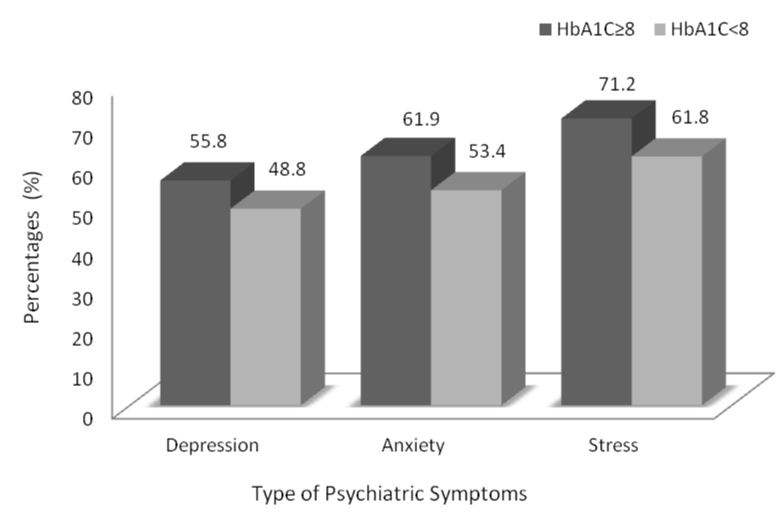
Discussion
This is first as an original study to investigate the prevalence of anxiety, depression and stress symptoms among DM patients using the Depression Anxiety Stress Scales (DASS-21) instrument and its predictors among in Turkish population. This study has shown that the co-existence of diabetes and depression, anxiety and stress are highly prevalent and those psychiatric symptoms were 18.4%, 12.1% and 21.6% respectively. These results are consistent with the previous reported studies [6,8,11,13,21]. Also, many studies have reported a prevalence rate of depression among adult diabetic patients ranging from 3.8% to 41.3% [6,8,13], and the current result obtained was (18.4%) which is within that range. The statistical analysis showed that depression, anxiety and stress symptoms are strongly affecting glycemic HbA1c control in Turkish DM patients. In fact, those psychiatric symptoms found to remain as an important independent risk factor for diabetes. Although, depression, anxiety and stress often remain unrecognized and untreated in DM patients [10,19,23-26]. Valenstein, et al. [27], reported that primary care physicians fail to detect depression in about 35-70% of patients. In fact, the current study suggests that the prevalence of depression, anxiety and stress among diabetes patients is underestimated. Further, the documented literature support the findings of this study that DM patients have an increased psychiatric morbidity [6, 9,11-13,25,26]. More recently clinical DM evaluation [28] reported a great amount of diabetes related psychological distress among DM patients is more than 30%. This is confirmative with the present study, depression symptoms were reported in one-fifth of the diabetic Turkish population.
The high prevalence of depression in diabetic patients has been very well established in various studies [6,9,11-13,25-28]. Multivariable logistic regression analysis based on Turkish population diabetic patients statistical analysis revealed that blood pressure, depression, anxiety, stress, physical inactivity, income, family history of diabetes and sleeping disturbance were significant risk factors for metabolic glycaemic control. This is consistent with the previous reported studies [6,8,11,13,28,29].
Maximizing diabetes care and its management represents a significant challenge to patients and understanding how best to receive treatment for complex disease [23,28]. Achieving optimal plasma glucose or metabolic glycemic control is difficult and many factors may be associated with poor control. Understanding how diabetes weaves into the complexity of an individual's personality and their life is very crucial. Also coping with the lifestyle and intellectual challenges demanded by diagnosis, patients are told living with a chronic, progressive condition [28]. It seems psychological health problems is more common among diabetic patients than the general population as reported earlier [6,11,10,19,24-27]. Norwegian population reported DM was observed higher with high levels of anxiety [25], this is confirmative with the current study.
Previously Bener, et al. [6,8] and Engum, et al. [25] reported depression, anxiety and stress symptoms has been positively linked with the diabetes patients. The prevalence of severe stress symptoms in the present conduct study sample of diabetics was 21.6% which consistent with the previous reported studies [6,8,13,25]. Furthermore, substantial depressed patients suffer from high levels of diabetes with the emotional stress [26]. In conclusion, we have observed strong relationship between diabetes and depression, anxiety and stress symptoms in Turkish population. This is confirmative with the reported study in Qatar [6,8] and in Bahrain, [13] and in Norwegian population [25].
However, some limitations of our study need to be addressed. This study based on cross sectional study does not allow for cause and effect relationships to be studied. This type design of study has restricted the capacity of the prediction of potential risk factors related to DM and psychiatry disorders. Of the total 1,600 diabetic patients approached, 1,147 (71.6%) gave their consent, 453 of them were excluded either because of incomplete questionnaires (163 diabetics) or did not want to respond to questionnaire (190 diabetics) due to lack of time resulting this could be considered as bias. Then, it should be noted that the DASS-21 questionnaire is only a screening tool for the presence of depression, anxiety and stress symptoms, which is not diagnostic of specific psychiatric disorders. HbA1c values were divided into two groups (<8% and = 8%) to describe glycemic control level for each subject, in accordance to previous reported studies, but, this can be considered as bias due to cut-off point. Furthermore, the strength of our study which is based on very large samples size and the sampling method.
Conclusion
The current study suggests that there is relationship between DM and depression, anxiety and stress symptoms in Turkish population. DM is very complex disease and it management requires significant self-control and increasing access to psychological support.
Acknowledgements
The authors would like to thank the Cerrahpasa Faculty of Medicine and Medipol International School of Medicine, Istanbul Medipol University for their support and ethical approval (RP# 10840098-604.01-E.3192).
Authors' contributions
AB, MO, EY and KUR organized study, collected data, performed statistical analysis, interpretation of the data, writing the manuscript and wrote the final draft of the article.
Ethics committee approval
Ethics committee approval was received for this study.
Informed consent
Informed consent was obtained for this study.
References
- Lustman PJ, Anderson RJ, Freedland KE, de Groot M, Carney RM, Clouse RE. Depression and poor glycemic control: a meta-analytic review of the literature. Diabetes Care. 2000; 23: 934-942. https://goo.gl/nN0or1
- The International Diabetes Federation. IDF Diabetes Atlas. Sixth Edition. 166 Chaussee de La Hulpe. B-1170 Brussels, Belgium: IDF; 2014. https://goo.gl/r1TbaX
- Berry E, Lockhart S, Davies M, Lindsay JR, Dempster M. Diabetes distress: understanding the hidden struggles of living with diabetes and exploring intervention strategies. Postgrad Med J. 2015; 91: 278-83. https://goo.gl/lvL7O8
- Coping with chronic illnesses and depression. Accessed on January 24, 2017: https://goo.gl/Y2HcmF
- Kriska AM, Saremi A, Hanson RL, et al. Physical activity, obesity, and the incidence of type 2 diabetes in a high-risk population. Am J Epidemiol. 2003; 158: 669-675. https://goo.gl/Nksm3i
- Bener A, Al-Hamaq AOAA, Dafeeah E. High Prevalence of Depression, Anxiety and Stress Symptoms among Diabetes Mellitus Patients. Open Psychiatry J. 2011; 5:5-12. https://goo.gl/RAqfcd
- Bener A, Al-Hamaq AOAA, Catan F, Rajput KU, Guzel M. Type 2 diabetes mellitus: a comparison between intensive diet, physical exercise and life style intervention with medication controlled management patients. BJMMR. 2016; 18: 1-13. https://goo.gl/SzfU4S
- Bener A, Ghuloum S, Al-Hamaq AOAA, Dafeeah E. Association between Psychological Distress and Gastrointestinal Symptoms in Diabetes Mellitus. World J Diabetes. 2012; 3: 123-129. https://goo.gl/fDyul5
- Pouwer F, Kupper N, Adriaanse MC. Does emotional stress cause type 2 diabetes mellitus? A review from the European Depression in Diabetes (EDID) Research Consortium. Discov Med. 2010; 9: 112-118. https://goo.gl/dKM9fY
- Bener A, Al-Laftah F, Al-Hamaq AOAA, Daghash M, Abdullatef WK. A study of diabetes complications in an endogamous population: An emerging public health burden: Diabetes Metab Syndr. 2014; 8: 108-114. https://goo.gl/4BeyJm
- Kaur G, Tee GH, Ariaratnam S, Krishnapillai AS, China K. Depression, anxiety and stress symptoms among diabetics in Malaysia: a cross sectional study in an urban primary care setting. BMC Fam Pract. 2013 May 27;14:69. doi: 10.1186/1471-2296-14-69. https://goo.gl/czIw9s
- Davies M. Psychological aspects of diabetes management. Medicine. 2015; 43: 57-59. https://goo.gl/pjQsdY
- Almawi W, Tamim H, Al-Sayed N, Arekat MR, Al-Khateb GM, Baqer A, Tutanji H, Kamel C. Association of co-morbid depression, anxiety and stress disorders with type 2 DM in Bahrain, a country with a very high prevalence of type 2 DM. J Endocrinol Invest. 2008; 31: 1020-1024. https://goo.gl/vJgjxt
- World Health Organization. The prevention of diabetes and its complications. WHO report (2006) [accessed on 2017/30/1] Available from: https://goo.gl/Bd1ynN
- Levibond PF, Levibond SH. The structure of negative emotional states: Comparison of the Depression Anxiety Stress Scales (DASS) with the Beck Depression and Anxiety Inventories. Behav Res Ther. 1995; 33: 335-343. https://goo.gl/1iMTfp
- Brown TA, Chorpita BF, Korotitsch W, Barlow DH. Psychometric properties of the Depression Anxiety Stress Scales (DASS) in clinical samples. Behav Res Ther. 1997; 35: 79-89. https://goo.gl/Qp077n
- Clara IP, Cox BJ, Enns MW. Confirmatory factor analysis of the Depression-Anxiety-Stress Scales in depressed and anxious patients. J Psychopathol Behav Assess. 2001; 23: 61-67. https://goo.gl/uSXoKm
- Henry JD, Crawford JR. The short-form version of the Depression Anxiety Stress Scales (DASS-21): Construct validity and normative data in a large non-clinical sample. Br J Clin Psychol. 2005; 44: 27-239. https://goo.gl/ZWdBRD
- Beck AT, Steer RA, Brown GK. BDI-II, Beck Depression Inventory: Manual. San Antonio: TX: Psychological Corporation;1996. https://goo.gl/d2k8Rk
- Lustman PJ, Clouse RE, Griffith LS, Carney RM, Freedland KE. Screening for depression in diabetes using the beck depression inventory. Psychosom Med. 1997; 59: 24-31. https://goo.gl/WlUSDj
- Gois C, Dias VV, Raposo JF, do Carmo I, Barbosa A. Vulnerability to stress, anxiety and depressive symptoms and metabolic control in Type 2 diabetes. BMC Res Notes. 2012; 5: 271. https://goo.gl/lCivLq
- Nichols GA, Hillier TA, Javor K, Brown JB: Predictors of glycemic control in insulin-using adults with type 2 diabetes. Diabetes Care. 2000; 23: 273-277. https://goo.gl/gv9X2f
- Ismail A, Suddin LS, Sulong S, Ahmed Z, Kamaruddin NA, Sukor N. Profiles and Factors Associated with Poor Glycemic Control Among Inpatients with Diabetes Mellitus Type 2 as a Primary Diagnosis in a Teaching Hospital. Indian J Community Med. 2016; 41: 208-12. https://goo.gl/D8CAl4
- Mosaku K, Kolawole B, Mume C, Ikem R. Depression, anxiety and quality of life among diabetic patients: a comparative study. J Natl Med Assoc. 2008; 100: 73-78. https://goo.gl/CP23dc
- Engum A. The role of depression and anxiety in onset of diabetes in a large population based study. J Psychosom Res. 2007; 62: 31-38. https://goo.gl/o5jbDl
- Zahid N, Asghar S, Claussen B, Hussain Al. Depression and diabetes in a rural community in Pakistan. Diabetes Res Clin Pract. 2008; 79: 124e7. https://goo.gl/MFCe4y
- Valenstein M, Vijan S, Zeber JE, Boehm K, Buttar A. The cost-utility of screening for depression in primary care. Ann Intern Med. 2001; 134: 345-60. https://goo.gl/HpsidN
- Hermans N, Kulzer B, Krichbaum M, Kubiak T, Haak T. How to screen for depression and emotional problems in patients with diabetes: Comparison of screening characteristics of depression questionnaires, measurement of diabetes-specific emotional problems and standard clinical assessment. Diabet Med. 2005; 22: 293-300. https://goo.gl/4oHKx1
- Kubiak T, Mann CG, Barnard KC, Heinemann L. Psychosocial Aspects of Continuous Glucose Monitoring: Connecting to the Patients' Experience. J Diabetes Sci Technol. 2016; 28; 10: 859-63. https://goo.gl/kV1xaa
Authors submit all Proposals and manuscripts via Electronic Form!


